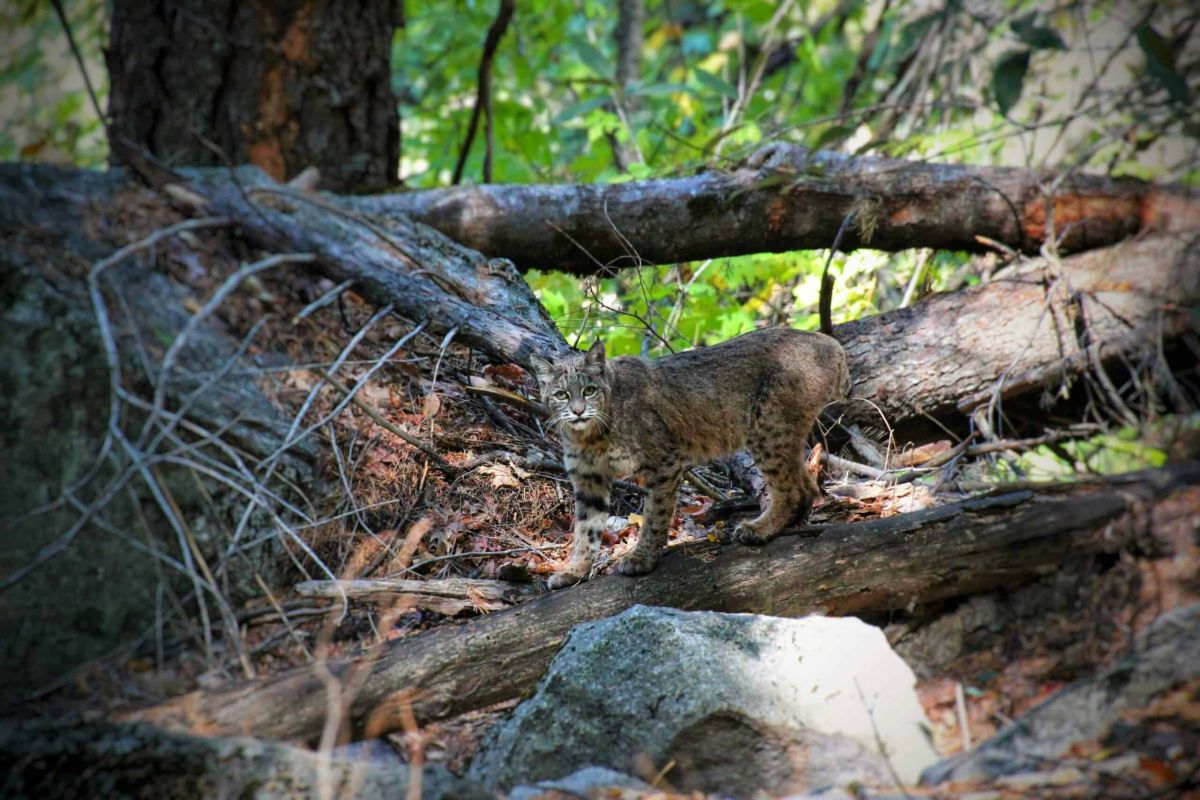The Fascinating World of Bobcats: Nature’s Elusive Feline

When we think of wild cats, many of us might conjure images of majestic tigers or graceful cheetahs. However, one of the more intriguing and adaptable felines is the bobcat (Lynx rufus), a small but powerful predator that roams North America. With its distinctive tufted ears, short tail, and striking spots, the bobcat is truly a remarkable creature deserving of our attention.
A Brief Introduction to Bobcats
Bobcats are medium-sized cats that typically weigh between 20 to 35 pounds, with males being slightly larger than females. They boast a body length of about 26 to 41 inches, not including their short, stubby tail, which is roughly 4 to 7 inches long. Their fur, which can vary from a pale yellow to a rich reddish-brown, is covered in dark spots and stripes, providing excellent camouflage in their natural habitats.
Habitat and Distribution
Bobcats are highly adaptable animals found throughout a diverse range of environments across North America, from the forests of the Northeast to the deserts of the Southwest and the wetlands of Florida. They prefer areas with dense vegetation that provide shelter and abundant hunting opportunities, such as forests, swamps, and mountains. Their adaptability to various ecosystems has allowed their populations to grow robustly despite habitat changes.
Diet and Hunting Habits
As carnivores, bobcats are skilled hunters that primarily prey on small to medium-sized animals. Their diet includes rabbits, hares, birds, and rodents, but they are also known to take down larger mammals such as deer when food is scarce. Bobcats are solitary hunters, relying on stealth and patience to ambush their prey. Their keen eyesight and acute hearing help them detect movement, and their explosive bursts of speed enable them to cover ground quickly when closing in on their meal.
Behavior and Social Structure
Bobcats are solitary creatures, typically preferring to hunt and live alone, except during mating season or when a mother is raising her kittens. They are highly territorial animals, with males establishing larger territories than females to ensure access to resources. Bobcats use scent marking, vocalizations, and scratch marks to communicate and define their territory.
Mating and Reproduction
The mating season for bobcats typically occurs from late winter to early spring. After a gestation period of about 60-70 days, a female bobcat will give birth to a litter of one to six kittens. The kittens are born blind and rely on their mother for survival during their first few months of life. They begin to explore their surroundings at around 5 weeks old and will accompany their mother on outings as they grow. By the time they reach 4 to 5 months old, the young bobcats start to learn essential hunting skills before eventually becoming independent.
Conservation Status
Bobcats are classified as least concern by the International Union for Conservation of Nature (IUCN), which indicates that they are not currently facing significant threats to their populations. However, habitat loss due to urban development, road construction, and fragmentation remains a concern. Local hunting regulations and awareness programs play a crucial role in ensuring their populations remain healthy.
Bobcats in Culture and Fascination
Throughout history, bobcats have held symbolic significance in various cultures. They are often associated with stealth, independence, and resilience. Their elusive nature makes them a popular subject in folklore, art, and literature.
Many people are captivated by the presence of bobcats in the wild, leading to increased interest in wildlife photography and eco-tourism. Nature enthusiasts often seek out opportunities to observe these magnificent cats in their natural habitats, fostering a deep appreciation for biodiversity.
Conclusion
Bobcats are an impressive example of nature’s creativity, showcasing the beauty and complexity of wild ecosystems. Their adaptability, hunting prowess, and intriguing behavior make them a fascinating subject of study and admiration. As we continue to explore and protect their habitats, let’s take a moment to appreciate the silent shadows of the woods—the bobcats, the elusive felines of North America.



